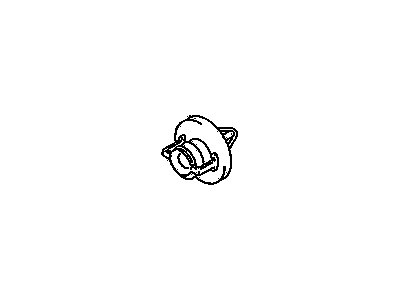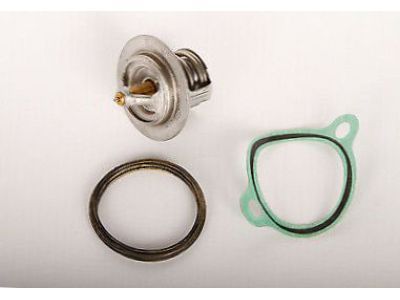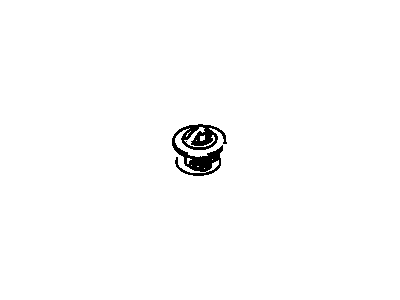
My Garage
My Account
Cart
Genuine Chevrolet Tracker Thermostat
Engine Coolant Thermostat- Select Vehicle by Model
- Select Vehicle by VIN
Select Vehicle by Model
orMake
Model
Year
Select Vehicle by VIN
For the most accurate results, select vehicle by your VIN (Vehicle Identification Number).
5 Thermostats found
Chevrolet Tracker Thermostat, Engine Coolant
Part Number: 91176904$11.89 MSRP: $21.62You Save: $9.73 (45%)Ships in 1-2 Business DaysChevrolet Tracker Thermostat, Engine Coolant
Part Number: 91176905$12.34 MSRP: $42.34You Save: $30.00 (71%)Ships in 1-2 Business Days
Chevrolet Tracker Thermostat
Chevrolet Tracker Thermostat is an important part of car cooling system most of which are situated near the radiator. The most important one and which justifies its design is to act as a thermostat, controlling the temperature at which the engine operates to avoid reaching critical levels that can damage the engine, besides ensuring the premier performance. This is done through the use of closed-loop control devices such as the Chevrolet Tracker Thermostat that turn 'on' or 'off' heating or cooling systems or regulate the flow of the heat transfer fluids. In the course of utilization of Chevrolet Tracker vehicles, different types of thermostats may have been used such as the mechanical ones like the bimetallic strips and wax pellet thermostats. The wax pellet thermostat for example controls the general heat of the engine depending on the expansion and contraction of the wax pellet in case of heat variations. This kind of thermostat is more common in automobile industry especially in cars like Chevrolet Tracker to help regulate the temperature in which the engine will run. To sum up, Chevrolet Tracker Thermostat is crucial for the car's further usage as it controls the temperature of the engine using such means as wax pellets or bimetallic strips. These thermostats are very vital in the operation of the Chevrolet Tracker since they regulate the thermal conditions of its operation so that it rolls with ease and efficiency.
Each OEM Chevrolet Tracker Thermostat we offer is competitively priced and comes with the assurance of the manufacturer's warranty for the part. Furthermore, we guarantee the speedy delivery of your orders right to your doorstep. Our hassle-free return policy is also in place for your peace of mind.
Chevrolet Tracker Thermostat Parts Questions & Experts Answers
- Q: What steps should be taken before assuming the thermostat is the cause of a cooling system problem on Chevrolet Tracker?A:If a cooling system seems to be failing, it's often a mistake to immediately accuse the thermostat, though, because you should always consider the coolant level, the tension of the drivebelt, and whether the temperature gauge is functioning correctly either. Should the time it appears that the engine warm up requires by the operation of the heater or the temperature gauge be longer than normal, the thermostat is likely to be stuck open and therefore should be replaced. If the engine is hot, feel the upper radiator hose-if it does not feel hot while the engine is hot, then the thermostat is probably stuck shut and so the engine will need a new thermostat to allow coolant to flow out to the radiator. One must be particularly careful as driving without a thermostat may result in problems with the emissions and the fuel consumption. An upper radiator hose is hot when there is flow of coolant and the thermostat is open. Remove the negative battery terminal and then drain the cooling system, if the coolant is in good condition, you ought to save it. To access the thermostat housing you have to look for the upper radiator hose, slide it over the engine, undo the hose clip, and retract the hose. If the outer surface of the fitting is worn out, it may require replacement of thermostat housing cover. Take the bolts out and then disconnect the housing cover: be ready for some coolant loss. Before removing the old thermostat, you need to know its orientation and clean the faces of gasket well. Fit the new thermostat with the appropriate end upwards, through they should also align the air bleed holes. Coat both the sides of the new gasket with RTV sealant, fit it into the housing and then place the cover into the housing and screws the bolts up to recommended torque. With the engine off, reconnect the hose and secure the clamp, then add the missing coolant, and if you turn the engine on, you will be able to check for leaks, and or a properly working thermostat.
















